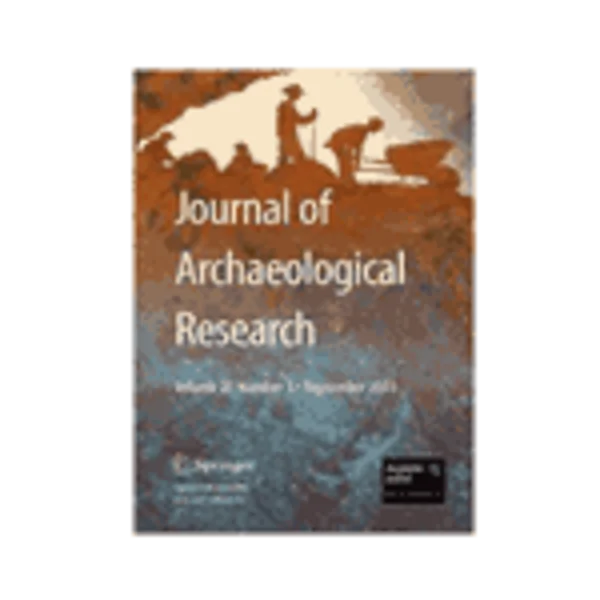-
paleolithic art: a cultural history
جزئیات بیشتر مقاله- تاریخ ارائه: 1392/07/24
- تاریخ انتشار در تی پی بین: 1392/07/24
- تعداد بازدید: 782
- تعداد پرسش و پاسخ ها: 0
- شماره تماس دبیرخانه رویداد: -
in this article we review the history of the terms and ideas that have been used to conceptualize paleolithic art since the end of the 19th century. between 1900 and 1970, prehistoric representations were typically divided into two main groups: parietal art (including rock and cave art) and portable (or mobiliary) art. this classification gave rise to asymmetrical attitudes about paleolithic images. in particular, many portable and nonfigurative representations were overlooked while a small number of cave paintings were praised for their realism. although the portable/parietal division has remained a popular divide among archaeologists, in the last 30 years increasing numbers of specialists have crossed the boundaries established by these categories. they have developed new frameworks within which more kinds of images are meaningfully approached and incorporated into the analysis of paleolithic art and symbolism. the emergence of new approaches to pleistocene imagery is the result of a number of interrelated processes, including the globalization of paleolithic art studies, the impact of new discoveries, and the development of new approaches to art, images, and symbolism.
مقالات جدیدترین رویدادها
-
استفاده از تحلیل اهمیت-عملکرد در ارائه الگوی مدیریت خلاقیت سازمانی و ارائه راهکار جهت بهبود
-
بررسی تاثیر ارزش وجوه نقد مازاد بر ساختار سرمایه شرکت های پذیرفته شده در بورس اوراق بهادار تهران
-
بررسی تأثیر سطح افشای ریسک بر قرارداد بدهی شرکت های پذیرفته شده در بورس اوراق بهادار تهران
-
بررسی تأثیر رتبه بندی اعتباری مبتنی بر مدل امتیاز بازار نوظهور بر نقد شوندگی سهام با تأکید بر خصوصی سازی شرکت ها
-
تأثیر آمیخته بازاریابی پوشاک ایرانی بر تصویر ذهنی مشتری پوشاک ایرانی (هاکوپیان)
-
بررسی اثر ارتعاشات قطار زیر زمینی شهر قم بر بنای تاریخی سر درب مدرسه غیاثیه
-
فلسفه تکنولوژی بر مبنای صدرالمتالهین و از منظر هایدگر
-
بررسی حساسیت کژدم های خطرناک استان هرمزگان نسبت به حشره کش های شیمیایی پیشنهادی who
-
مروری بر آزمایش های مربوط به ستون های لوله فولادی بیضوی پر شده با بتن خود متراکم
-
enhancement of wear resistance of ductile iron surface alloyed by stellite 6
مقالات جدیدترین ژورنال ها
-
مدیریت و بررسی افسردگی دانش آموزان دختر مقطع متوسطه دوم در دروان کرونا در شهرستان دزفول
-
مدیریت و بررسی خرد سیاسی در اندیشه ی فردوسی در ادب ایران
-
واکاوی و مدیریت توصیفی قلمدان(جاکلیدی)ضریح در موزه آستان قدس رضوی
-
بررسی تاثیر خلاقیت، دانش و انگیزه کارکنان بر پیشنهادات نوآورانه کارکنان ( مورد مطالعه: هتل های 3 و 4 ستاره استان کرمان)
-
بررسی تاثیر کیفیت سیستم های اطلاعاتی بر تصمیم گیری موفق در شرکتهای تولیدی استان اصفهان (مورد مطالعه: مدیران شرکتهای تولیدی استان اصفهان)
-
کاربرد شناساگرهای زیستی در ارزیابی محیط زیست
-
اسکن فانتوم، گامی مهم در کالیبراسیون اولتراسوند سه بعدی و مقایسه روش های مختلف آن
-
بررسی رابطه بین افشای مسئولیت اجتماعی شرکت و سهم بازار
-
رفتارهای انحرافی در سازمان: تبیین نقش ادراک حمایت سازمانی و بی عدالتی، ناکامی و شخصیت
-
اثربخشی تصویرسازی ذهنی بر میزان نشخوار فکری و امید به زندگی نوجوانان افسرده شهرستان بابل




سوال خود را در مورد این مقاله مطرح نمایید :